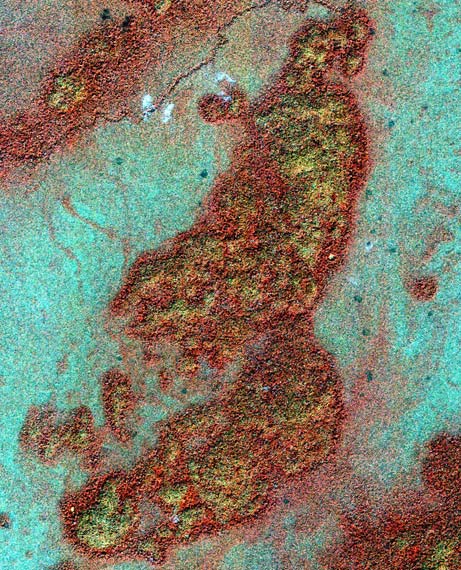
"Usually in archaeology there's an elite focus on the majestic cities that we can wonder at. But the burning question is aways how did they feed these populations."
That's Stephen Houston, an expert on Maya civilization at Brown Unviersity in Providence, Rhode Island. He's commenting on a story on Nature's website today about how the ancient Maya used an elaborate system of canals to reclaim vast swamps and turn them into farms.
The Maya lived in the Yucatan Peninsula in central America, from before 1000 BC, with the civilisation reaching its height from about 400 BC to 900 AD. They're famous for their impressive stone pyramids, such as at Chichen Itza in Mexico, or Tikal in Guatemala, and for their achievements in maths and astronomy. But they lived on rough, rocky terrain, mixed with huge areas of wetland (see satellite photo) created by rising sea levels. So, as Houston says, how did they manage to grow enough food for their huge populations?
Timothy Beach and his wife Sheryl Luzzadder-Beach, both physical geographers, have been studying the remains of irrigation canals in northern Belize for the past twenty years, and reported on some of their latest work at the Geological Society of America meeting in Denver, Colorado, this week. The canals have been studied before, but the pair are using tools such as satellite imaging and isotope analysis combined with more than 60 excavations to try to work out how widespread the canals were, and exactly how they were employed.
The researchers reckon that this canal system in Belize covered an area 100 kilometres across, and was used to divert water and create new farmland. The water table in this area varied throughout the year - sometimes it was two metres below the surface, sometimes the land was completely flooded. The Maya responded by digging canals and throwing the soil onto adjacent land, creating raised fields on which they grew crops such as avocado, grass and maize.
Some of the efforts seemed piecemeal, but Beach says that others were "preplanned, large-scale efforts" involving ditches up to 900 metres long. And if the Maya were doing this in northern Belize, it seems likely that they were using the same methods elsewhere too - today around 40% of the Yucatan peninsula is swamp.
Ingenious. But sadly there was a downside - one of the theories for what caused the downfall of the Maya civilisation is that by converting the wetlands to avoid floods, they induced a catastrophic drought.